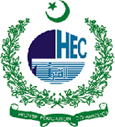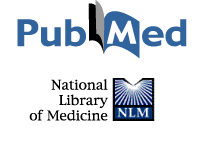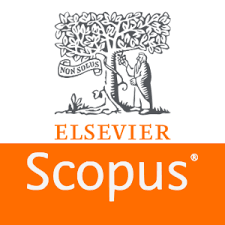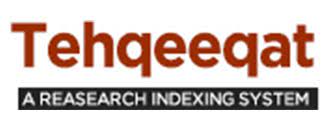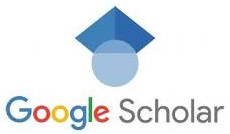THE ILLUSION OF UNDETECTED PLAGIARISM: AN ETHICAL AND ACADEMIC DILEMMA IN RESEARCH
DOI:
https://doi.org/10.55519/JAMC-01-13258Keywords:
Academics, Attitudes, Intervention, plagiarism, policyAbstract
Background; Despite knowing about the fact that, Plagiarism is an academic fraud as there is a general lack of awareness that plagiarism should be avoided at all levels. Faculty play a crucial role in fostering ethical professionalism, so clear perspectives on plagiarism are essential. The objective was to enhance positive attitudes toward plagiarism among faculty members of Jinnah Medical & Dental College and Sohail University through an academic intervention, measured by an improvement in awareness and ethical perception. Method; this Pre and Post academic Interventional study was conducted from September to November 2022 for the period of three months at the Sohail University. About 130 faculty members were included through non-probability purposive sampling technique. The intervention was in a form of series of “Series of Interactive session (LGIS) on Plagiarism description its types, its consequences and HEC policy regarding Plagiarism in Research methodology through multimedia”. Study participants were called for the intervention in a calm and quiet auditorium and same self-administered questionnaire was given Pre and Post the intervention on the same participants after taking written consent from the study participants. ERC was taken from the Sohail University Hospital Committee. Data was entered and analyzed by SPSS version 25, Descriptive were calculated and paired t test was applied to determine the change in attitudes among faculty before and after the intervention. Results; it was found that positive attitude towards Plagiarism significantly improved post-intervention (SEM=0.435, 95% CI= 0.371‒1.99, p=0.001), similarly for negative attitude there was significant change after the intervention (SEM=0.266, 95% CI= 0.123‒1.39, p=0.001) and faculty recognition of norms also improved after intervention (SEM=0.327, 95% CI=0.306‒1.70, p=0.001). Conclusion; this study concluded that our educational intervention was found to be effective in improving the overall attitudes and norms towards plagiarism. Hence, we should promote regular educational sessions among researchers to overcome the increasing trend of Plagiarism at institutional level. Furthermore, we suggest to include this interventional session in the curriculum of all undergraduate programs to minimize the Plagiarism in Scientific writing.
References
1. Šprajc P, Urh M, Jerebic J, Trivan D, Jereb E. Reasons for plagiarism in higher education. Organizacija 2017;50(1):33–45.
2. Dawson MM, Overfield JA. Plagiarism: Do students know what it is? Biosci Educ 2006;8(1):1–5.
3. Martin BR. Whither research integrity? Plagiarism, self-plagiarism and coercive citation in an age of research assessment. Res Policy 2013;42(5):1005–14.
4. Selwyn N. ‘Not necessarily a bad thing: A study of online plagiarism amongst undergraduate students. Assess Eval High Educ 2008;33(5):465–79.
5. Hall J. Plagiarism across the curriculum: How academic communities can meet the challenge of the undocumented writer. Across Discipl 2005;2(9):1–11.
6. Giannopoulou E, Kokkinos D, Koulouris A, Triantafyllou I. Perception of plagiarism among undergraduate students in Greek Universities. J Integr Inf Manag 2021;6(2):13–20.
7. Ramzan M, Munir MA, Siddique N, Asif M. Awareness about plagiarism amongst university students in Pakistan. High Educ 2012;64:73–84.
8. Shirazi B, Jafarey AM, Moazam F. Plagiarism and the medical fraternity: a study of knowledge and attitudes. J Pak Med Assoc 2010;60(4):269.
9. Mansoor F, Ameen K, Arshad A. An exploratory study of university librarians’ perceptions on causes and deterrents of plagiarism: A Pakistani perspective. Glob Knowl Mem Commun 2022;71(6):510–25.
10. Rugira L. University students are plagiarising? Say it ain’t so. The New Times; 2017.
11. Rathore FA, Waqas A, Zia AM, Mavrinac M, Farooq F. Exploring the attitudes of medical faculty members and students in Pakistan towards plagiarism: a cross sectional survey. PeerJ 2015;3:e1031.
12. Jereb E, Urh M, Jerebic J, Šprajc P. Gender differences and the awareness of plagiarism in higher education. Soc Psychol Educ. 2018 Apr;21:409–26.
13. Ghajarzadeh M, Norouzi-Javidan A, Hassanpour K, Aramesh K, Emami-Razavi SH. Attitude toward plagiarism among Iranian medical faculty members. Acta Med Iran 2012;50(11):778–81.
14. Kaler M, Richter C, Scoville C, Szigeti S. The moral universe: A survey of undergraduate student attitudes towards plagiarism. Can Perspect Acad Integr 2023;6(1):1–15.
15. Zakirulla M, Alqahtani FM, Alshahrani FT, Khalid S, Alqahtani AA, Almalki AY, et al. Exploring the attitude of dental undergraduate students in Saudi Arabia towards plagiarism. J Res Med Dent Sci 2020;8(3):123–30.
16. Ehrich J, Howard SJ, Mu C, Bokosmaty S. A comparison of Chinese and Australian university students' attitudes towards plagiarism. Stud High Educ 2016;41(2):231–46.
17. Pupovac V, Bilic-Zulle L, Mavrinac M, Petrovecki M. Attitudes toward plagiarism among pharmacy and medical biochemistry students–cross-sectional survey study. Biochem Med (Zagreb) 2010;20(3):307–13.
18. Rajovic N, Pavlovic A, Olatunde D, Pavlovic V, Stanisavljevic D, Milic N. Attitudes toward plagiarism among PhD medical students in Serbia. Healthc Transform Inform Artif Intell 2023;305:184.
19. Pritchett S. Perceptions about plagiarism between faculty and undergraduate students. San Diego (CA): Alliant International University; 2010.
20. Romanowski MH. Preservice teachers’ perception of plagiarism: a case from a college of education. J Acad Ethics 2022;20(3):289–309.
21. Eret E, Ok A. Internet plagiarism in higher education: tendencies, triggering factors and reasons among teacher candidates. Assess Eval High Educ 2014;39(8):1002–16.
Downloads
Published
How to Cite
Issue
Section
License
Copyright (c) 2025 Zeelaf Shahid, Faryal Nawab , Syed Sanower Ali, Urooj Fatima

This work is licensed under a Creative Commons Attribution-NoDerivatives 4.0 International License.
Journal of Ayub Medical College, Abbottabad is an OPEN ACCESS JOURNAL which means that all content is FREELY available without charge to all users whether registered with the journal or not. The work published by J Ayub Med Coll Abbottabad is licensed and distributed under the creative commons License CC BY ND Attribution-NoDerivs. Material printed in this journal is OPEN to access, and are FREE for use in academic and research work with proper citation. J Ayub Med Coll Abbottabad accepts only original material for publication with the understanding that except for abstracts, no part of the data has been published or will be submitted for publication elsewhere before appearing in J Ayub Med Coll Abbottabad. The Editorial Board of J Ayub Med Coll Abbottabad makes every effort to ensure the accuracy and authenticity of material printed in J Ayub Med Coll Abbottabad. However, conclusions and statements expressed are views of the authors and do not reflect the opinion/policy of J Ayub Med Coll Abbottabad or the Editorial Board.
USERS are allowed to read, download, copy, distribute, print, search, or link to the full texts of the articles, or use them for any other lawful purpose, without asking prior permission from the publisher or the author. This is in accordance with the BOAI definition of open access.
AUTHORS retain the rights of free downloading/unlimited e-print of full text and sharing/disseminating the article without any restriction, by any means including twitter, scholarly collaboration networks such as ResearchGate, Academia.eu, and social media sites such as Twitter, LinkedIn, Google Scholar and any other professional or academic networking site.



